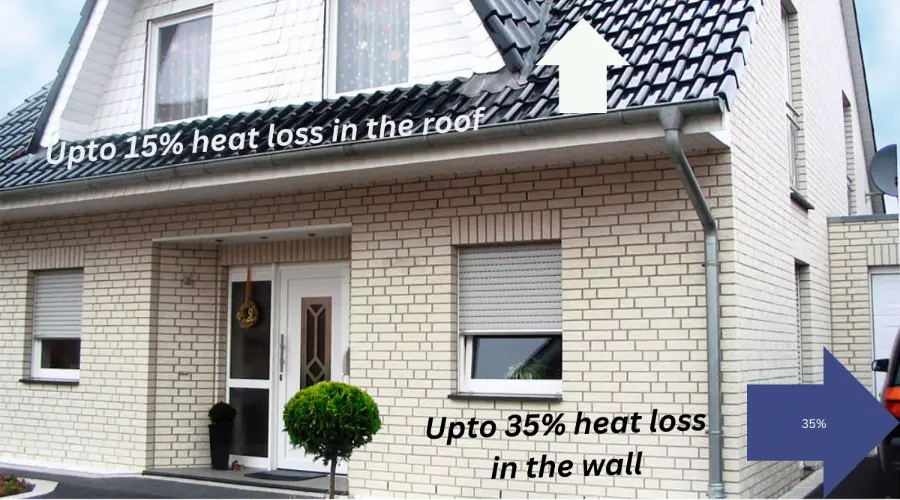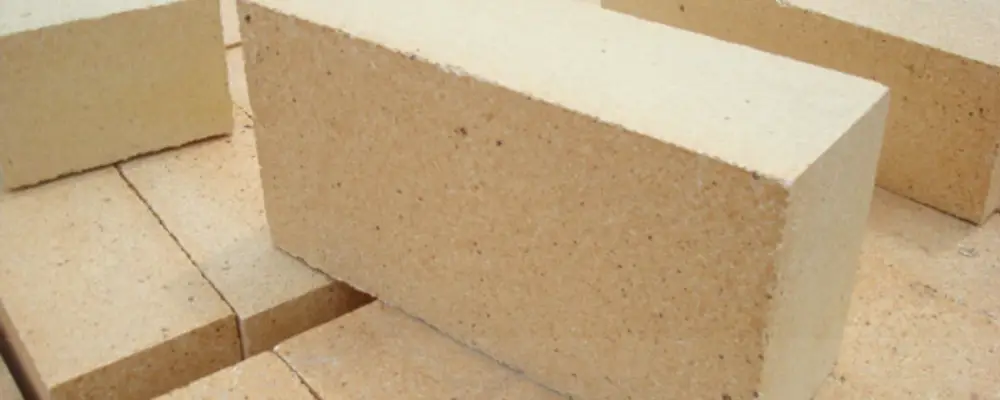Bricks are the primary construction materials that have been in use for thousands of years, providing good structural support to buildings. There are numerous bricks available in the construction industry, and silica bricks stand out for their colour, sharp finish, and resistance properties. Here, we look at what silica brick is, its composition, properties, manufacturing, applications, and everything you need to know about it.
What are Silica Bricks?
Silica brick is a refractory brick primarily made of silica (SiO₂) as the raw material. The high silica content in the refractory brick provides excellent thermal and chemical insulation. It is widely used in fireplaces such as burning furnaces, kilns, glass manufacturing, and other industrial applications.
Composition of Silica Bricks
- Silica (Sand)- High-purity silica sand is the primary raw material. Around 93-96% of this brick consists of silica.
- Alumina- Around 1-3% of the silica brick consists of Alumina, making it the secondary raw material.
- Other materials- Iron Oxide & Calcium Oxide are added at a range of 0.5-1.5%, and Magnesium Oxide is added at a range of 0.2-0.5%.
Properties of Silica bricks
Density
The density of the silica bricks varies based on the quality of the silica used and the grain size distribution. In general, the density of silica bricks ranges from 1800 kg/m³ to 2200 kg/m³ based on the pore volume, voids and compactness.
Porosity
Around 10 to 20% of the silica brick consists of pore holes and voids, which impacts the mechanical strength and thermal and chemical properties.
Compressive Strength
The compressive strength of silica bricks varies based on factors such as silica content, firing temperature, porosity, and impurities. Typically, the compressive strength of this brick ranges from 50 MPa to 100 MPa.
High Thermal Resistance
Silica brick is known for its high thermal resistance, allowing it to withstand high temperatures up to 1650℃ or even higher based on the quality and composition of raw materials. It is also resistant to thermal shock and is suitable for places where sudden temperature changes occur.
Chemical Resistance
Silica bricks provide high chemical resistance and have the ability to withstand the aggressive effects of acids, alkalis and other corrosive substances.
Low Expansion Coefficient
Silica bricks have a low coefficient for thermal expansion, which means they can expand and contract less when compared to other refractory bricks. This reduces the risk of cracking and ensures the structural integrity.
Application of Silica bricks

- Silica bricks are used in building fireplaces, such as burning furnaces and fire kilns, and in producing steel, glass, and ceramics.
- These bricks are used to construct boilers, heat exchangers, and thermal powerplants.
- They can be used for the construction of metal casting furnaces and the production of metal products.
- Used for constructing incinerators for waste disposal.
- Used for the construction of power plants such as coal-fired power plants and gas-fired power plants.
Manufacturing Process of Silica Bricks
Preparation of Raw Materials
Choosing high-quality silica-containing components such as quartzite, silica sand, or ganister is crucial. A small amount of binder materials, such as cement or lime sand, is added to hold the silica grains together. Other additives, such as alumina or magnesia, are used to improve the brick’s thermal properties.
Mixing
The prepared raw materials are mixed and ground together inside a ball mill at a specific ratio into a fine powder.
Moulding
The powdered mixture is transferred into a mold and compacted using a hydraulic press and vibrator to remove air pockets and ensure a dense and uniform structure.
Drying
The moulded bricks are then dried in a controlled environment under sustainable temperatures to remove excess moisture and prevent thermal shock or damage.
Firing
The dried bricks are then kiln burnt at a very high temperature of 1400℃ to 1600℃ to achieve the potential strength and resistance.
Testing & Storing
After the firing process, the silica brick is cooled down and tested to check for various properties. The tested bricks are then stored in a controlled environment before packing and shipping to the construction site.
Advantages and Disadvantages of Silica Bricks
Advantages
- It can withstand extremely high temperatures and is ideal for furnaces, kilns, and boilers.
- This brick can withstand sudden temperature changes due to its thermal shock resistance, preventing the structure from cracking and damage.
- It has high compressive strength, making it suitable for load-bearing structures.
- These bricks are highly resistant and can withstand chemical attacks caused by acids, alkalis, and other chemical reactions.
- Due to the low thermal conductivity, it can help reduce heat loss and improve energy efficiency.
- This brick is highly resistant and durable, making it withstand for a long period of time.
Disadvantages
- It is more expensive compared to other refractory bricks.
- These bricks are limited and not widely available in all regions.
- It involves specialised installation and handling, which makes it complex and requires high labour costs.
- These bricks are highly sensitive to moisture and could cause degradation or cracks over time.
- Although they have good chemical resistance, they are vulnerable to excess chemical attack.
- These bricks require regular maintenance to retain their physical properties.
Conclusion
Silica brick is one of the highly resistant and durable refractory bricks that provide numerous benefits. These bricks are primarily used in fireplaces due to their high thermal and chemical properties, making them industrial-exclusive materials. Although there are multiple benefits, this brick also has considerable limitations like availability, cost, complex installation, and degradation due to moisture content.
FAQs
No, Silica bricks are not usually suitable for residential construction due to their high-temperature resistance and specialised properties.
The main application of silica bricks is to withstand high temperatures and chemical reactions, which are suitable for fireplaces such as burning furnaces and fire kilns, manufacturing units such as steel, glass, and metal manufacturing facilities, and thermal power plants.

